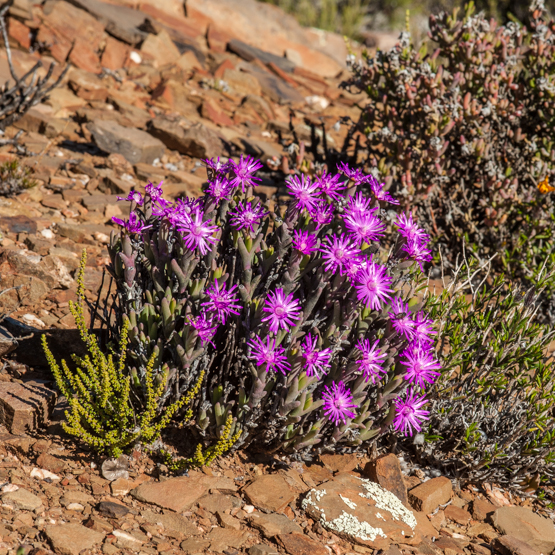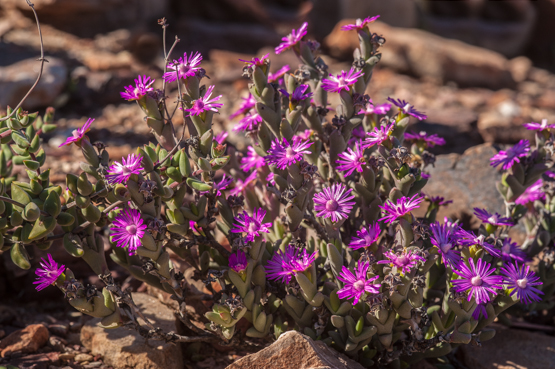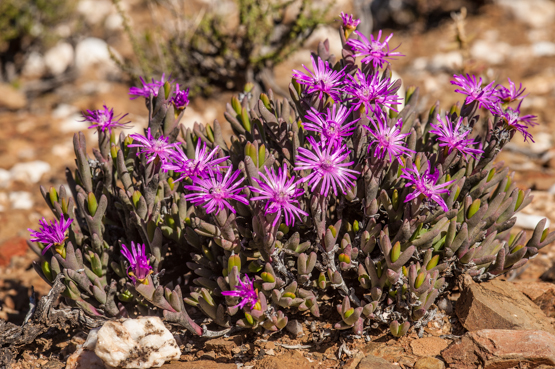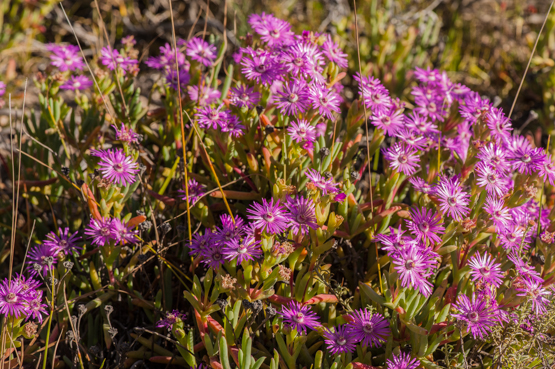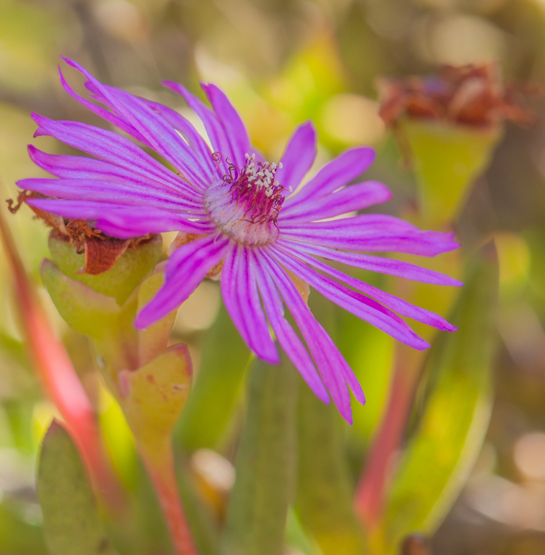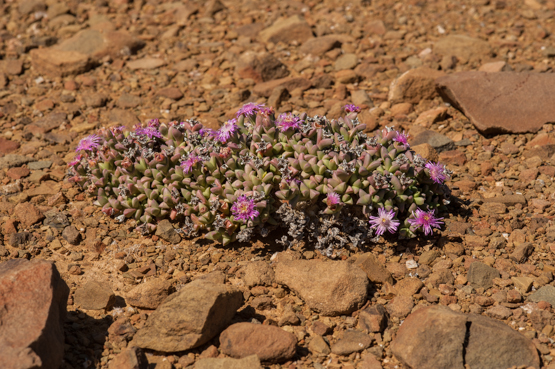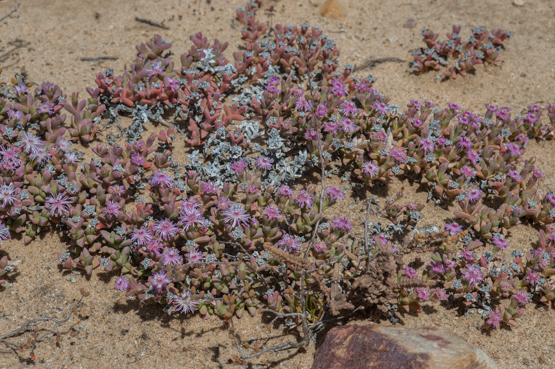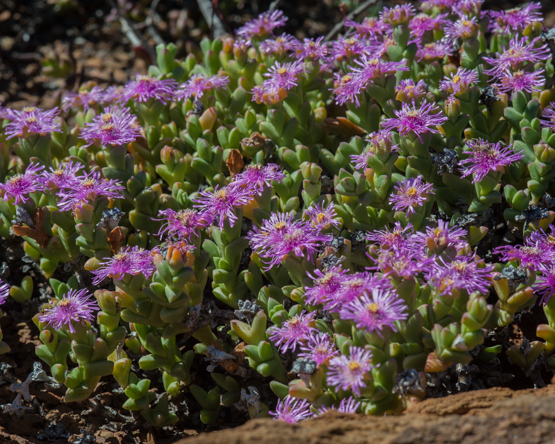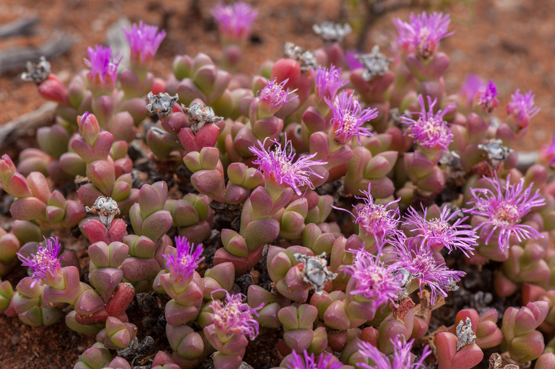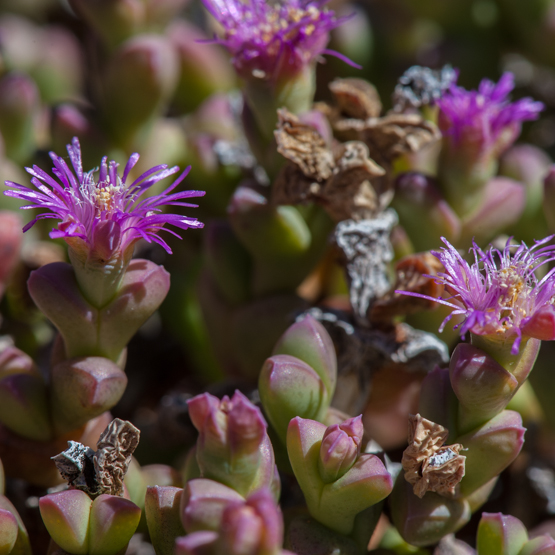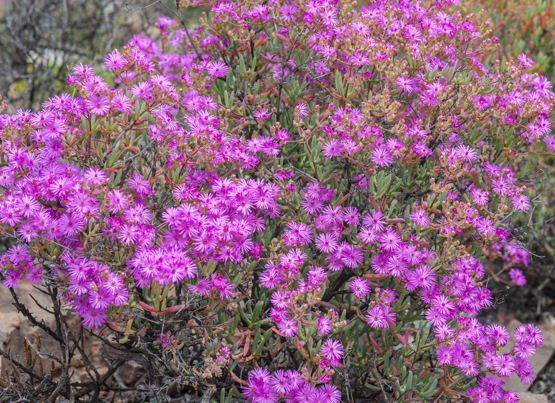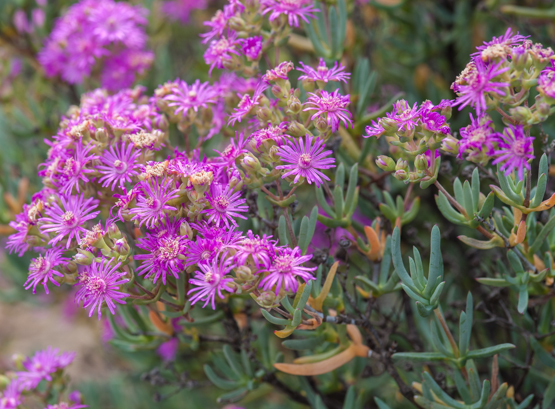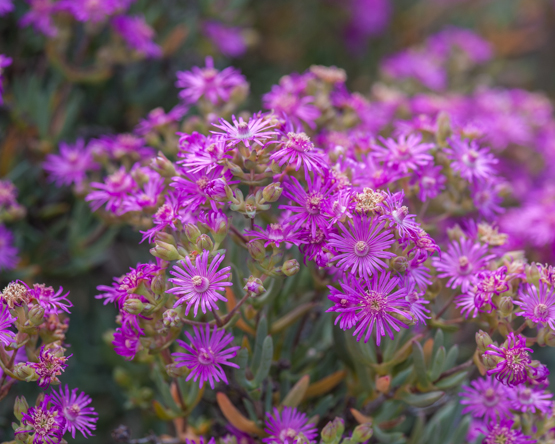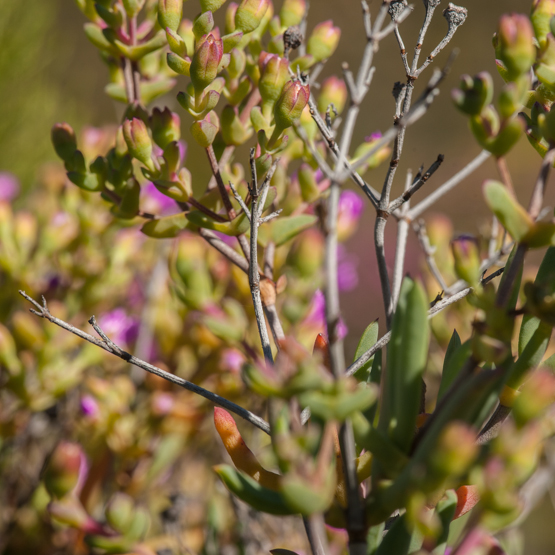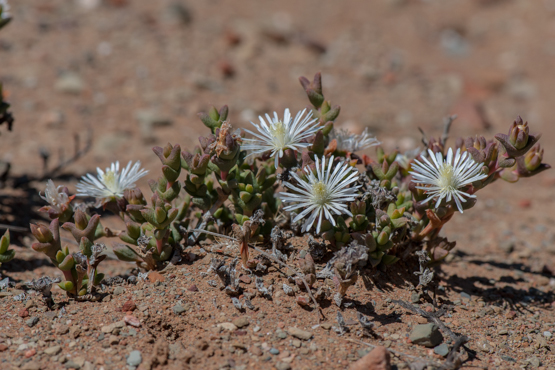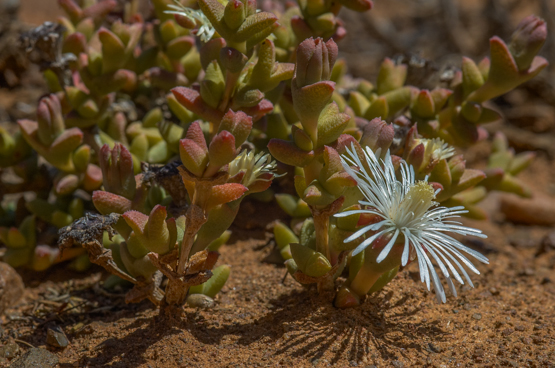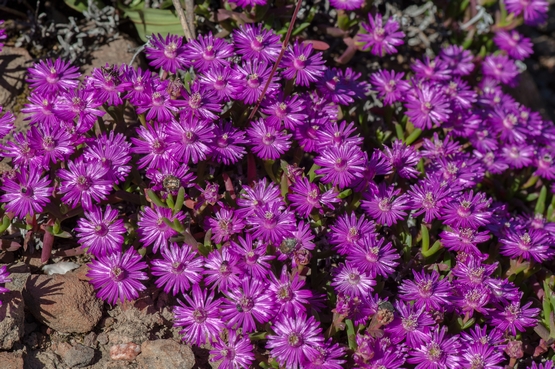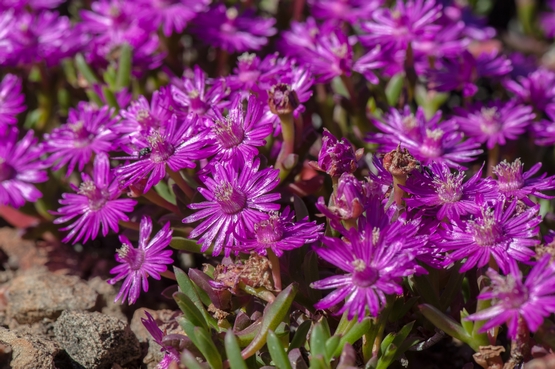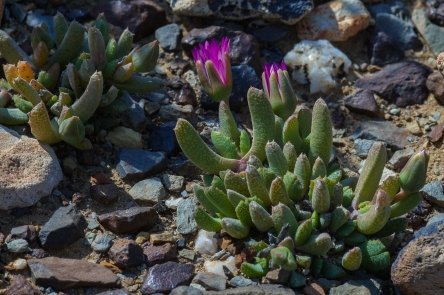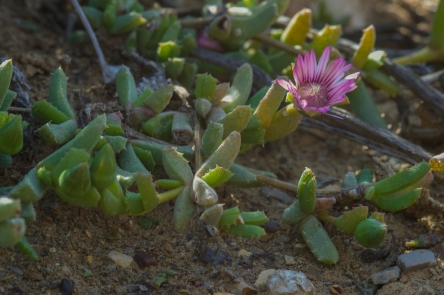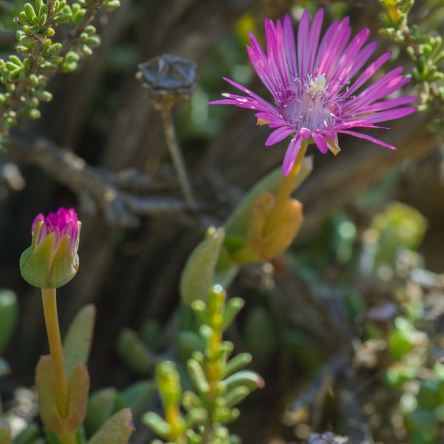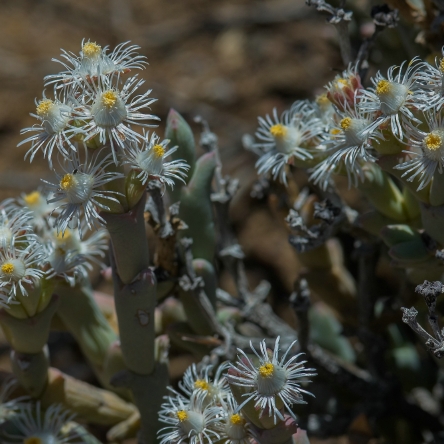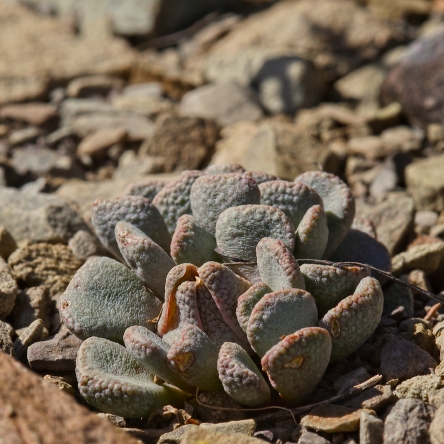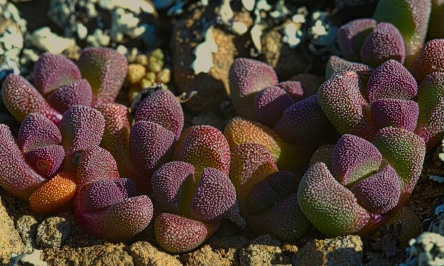Although the name suggests a wide distribution, this species seems to occur only in a small area in the southwest corner of the Great Karoo and the adjacent part of the Little Karoo.
The plants form small shrubs up to 30 cm tall and can be known most easily by the long leaf sheaths.
Tag: Ruschia
Ruschia caroli
In spring (August-September), this is one of the many Mesemb species decorating the countryside with their colourful flowers.
It occurs from my area northwards to Clanwilliam on sandy and clayey soils.
The shrubs are up to 60 cm in height and 80 cm in diameter, with decumbent* grey to reddish branches (* creeping on the ground with the tips curved upwards).
The flowers are 2-2.5 cm across and pink to magenta with a darker midline.
Looking at the pictures you will notice that the last one gives a rather different impression of the flowers. It was taken in the shade and very slightly overexposed. This combination gives a result that I find rather pleasing to the eye.
Ruschia impressa
Some people seem think that the second part of this name means impressive, but in reality it means impressed. (Don’t ask me what it refers to!).
At first sight it just seems to be another one of those many small, nondescript shrubby Mesembs. Only when you take the time to look at it properly you will see how cute it really is. I quite agree with the remark in the Illustrated of Succulent Plants: “The compact shape suggests that the species has a potential as garden or rockery plants”.
The plants do not get any taller than 6 cm. Maybe the best way to recognize them is the fact that the keel of the leaves is adorned with a small (sometimes inconspicuous) tooth.
The species is endemic to the western part of the Little Karoo (Ladismith, Montagu).
Ruschia pungens
Shrubby Mesembs are often difficult to identify with the help of literature. Once a more knowledgeable person has given you the right name, it usually seems hard to believe that you didn’t get there under your own steam.
This species is a case in point. Especially older plants are easily recognized: robust shrubs of up to a meter tall with the old inflorescences remaining on them for several years. These remains are hard and spiny, giving rising to the specific epithet.
R. pungens is a widespread species, occuring from Montagu to the Eastern Cape.
Ruschia nana
Two months ago I found one specimen of an interesting miniature shrub on the road from Montagu to the southwest entrance of Anysberg Nature Reserve (see first picture). After some digging in the literature I found out that it was Ruschia nana (nana = dwarf). The combination of 6 rather than 5 calyx lobes and locules (compartments in the fruit) on the one hand and compact growth on the other, is apparently unusual.
When I had another look at the picture, it occurred to me that I had seen similar plants a few years before on the farm near Matjiesfontein. By road this is quite a distance, but as the crow flies it is not more than about 70 km.
The other two pictures give an impression of these plants (as it happens they were also taken in October). I am sure they belong to the same species.
Ruschia lineolata
Yesterday for the first time I took a serious walk in the Montagu Nature Garden. One of the interesting plants I came across is shown here. The first question when one comes across a plant looking like this is always: is it a Ruschia or is it an Antimima? Last years’ fruit pointed in the direction of Ruschia, so that is where I started. For me and -I suppose- most other people, reading dozens of plant descriptions is not a favourite pastime. After going through the specialized literature without any luck, I decided to turn to one of the most excellent fieldguides I know :”Plants of the Little Karoo” by Jan Vlok and his wife Anne Lise. As soon as I saw their picture of Ruschia lineolata I got the feeling that this was it. But of course one still has to check and double check and fortunately all the written information I found fitted in.
“Lineolata” means bearing fine lines, referring to the beautifully striped petals.
The plants form mats up to 1 m across and because of their abundant flowering this looks like a great garden subject in an appropriate climate.
Hammeria meleagris
Ruschia crassa
Warts and all
In a recent post (Cover up, 14th Jan.) I discussed how spines, hairs etc. help succulents conserve water. In some families we also come across plants where the leaves are (partly) covered in warts, papillae or tubercles. Although these are often highly decorative, it seemed likely to me that they would first and foremost serve a useful purpose. After doing a bit of research I came up with some interesting information.
It appears that the presence of these projections on stems or leaves has an advantage for the plants in that the breathing pores are hidden in the lower areas between them. This diminishes transpiration and protects the plants from dehydration.
In the case of warts, there is an additional advantage: their epidermis is rich in crystals and lies over cells that store up tannin. This combination makes the plant rather unattractive to herbivores.
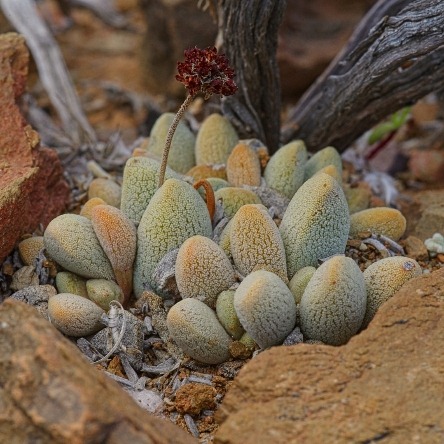
Crassula tecta is named after the warts on the leaves (tecta =covered or protected)
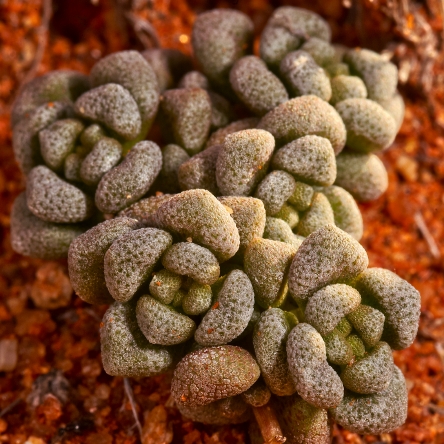
Crassula corallina v. macrorrhiza (corallina = coral-like)
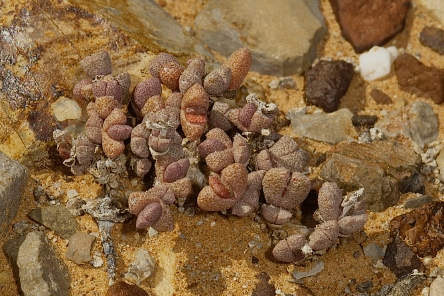
In Rhinephyllum graniforme the genus name means file leaf
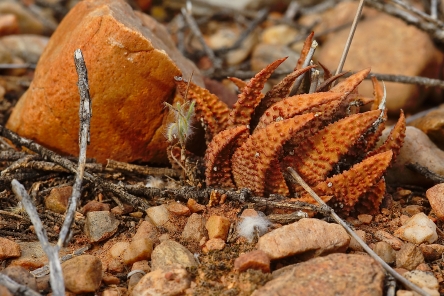
Haworthia scabra is aptly named too (scabra = rough)
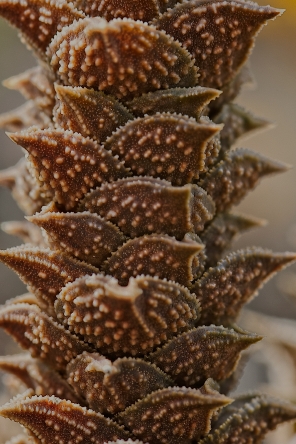
This Astroloba used to be called A. aspera (=rough). The current name A. corrugata has a similar meaning (wrinkled or furrowed)
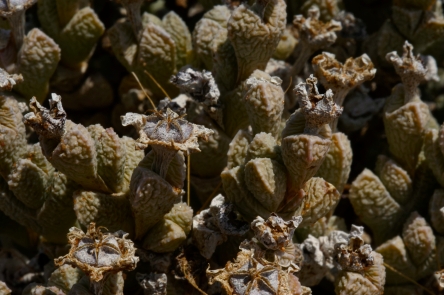
Ruschia muricata is rough to the touch and that is exactly what muricata means
In the following two species the names make no reference to things like warts or tubercles, but it is clear that this is not because of lack of these.
